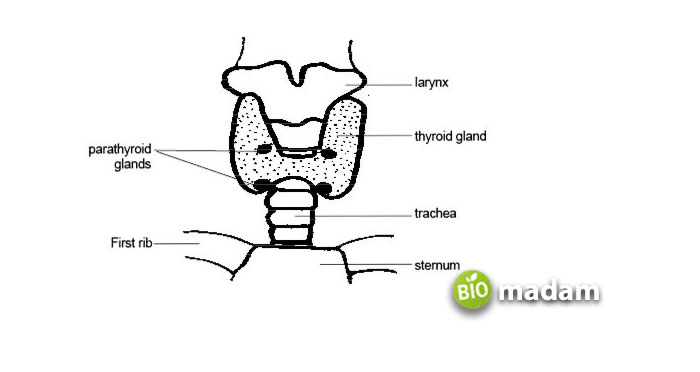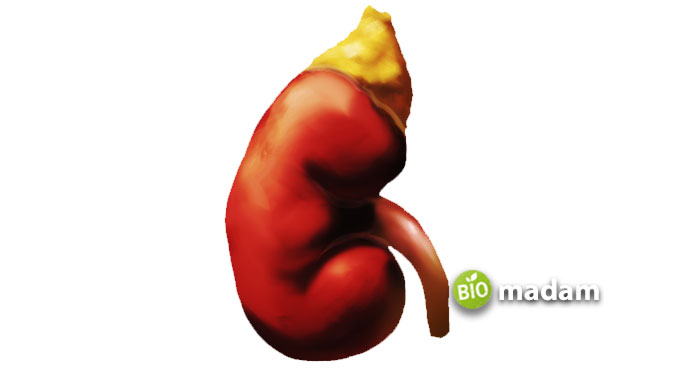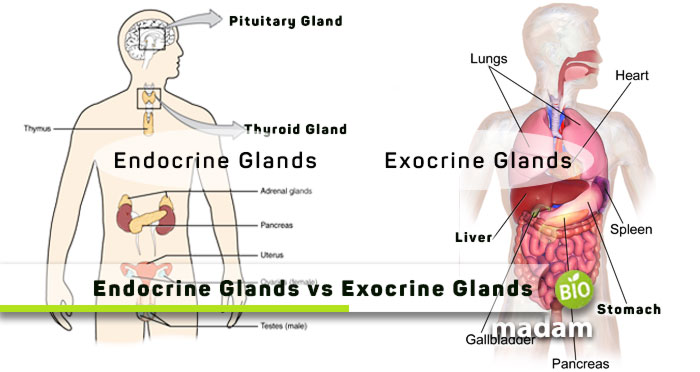Glands are an essential part of the human anatomy to facilitate body’s physiology by producing various secretions. There are two kinds of glands; exocrine and endocrine glands. While they both produce secretions that contribute to body processes, they vary significantly in the structure and type of fluids they produce.
Endocrine glands do not have ducts and produce hormones, whereas exocrine glands comprise ducts and are involved in the secretion of enzymes.
Let’s talk about the differences between endocrine and exocrine glands and their functions in detail for better understanding.
Comparison Table
| Factors | Endocrine Glands | Exocrine Glands |
| Secretion | Hormones | Enzymes |
| Ducts | Ductless | Have ducts |
| Secretion Site | Bloodstream | Outside organs |
| Function | Long-term activities | Short-term activity |
| Examples | Thyroid, adrenal, pituitary gland, etc. | Tear, sweat, mammary glands, etc. |
What are Endocrine Glands?
Endocrine glands are mainly involved in producing hormones that help in almost all bodily functions. Different endocrine glands make up the endocrine system that secretes hormones to facilitate communication between cells, tissues, and organs. If your endocrine glands do not function properly due to any reason, it can lead to stress and other issues like irregular reproductive function, weight gain, high sugar levels in the blood, etc.
Functions of Endocrine Glands
- The endocrine gland controls the release of hormones and some neurotransmitters.
- Produces hormones that control growth, development, metabolism, mood, reproduction, and other organs
- The hormones are released into the bloodstream to travel to other parts and organs.
Endocrine Glands in the Body
The endocrine system is based on numerous glands and organs that provide hormones for maintaining body functionality. Some of the endocrine glands in the body are:
Pituitary Gland
The pituitary gland is known as the master gland of the endocrine system. It takes stimulus from your brain to inform other glands in the body about the need for hormones. Hypothalamus in the brain signals the pituitary to stop the production of hormones. The pituitary gland produces the following hormones:
- Growth hormone – helps in growth
- Prolactin – helps in producing milk in lactating moms
- ADH (antidiuretic hormone) – controls blood pressure and water balance in the body
- ACTH (Adrenocorticotropic hormone) – stimulates the adrenal gland to produce other hormones
- TSH (thyroid-stimulating hormone) – stimulates the secretion of thyroid hormones whose range can be checked through thyroid tests.
- Oxytocin – helps the production of milk during lactation
- Luteinizing hormone – regulates testosterone production in men and estrogen in women.

Thyroid Gland
The thyroid gland produces thyroid hormone that controls metabolism and growth. It is one of the most critical glands in the body that plays a major role in body development. Reduced secretion of thyroid hormones leads to hypothyroidism, while accelerated production by the thyroid gland causes hyperthyroidism.
Hyperthyroidism and hypothyroidism have specific symptoms and complications due to fluctuations in thyroid function.
Adrenal Gland
The adrenal gland is another essential gland in the body that produces the “fight or flight” hormone epinephrine (also called adrenaline). Adrenal glands also affect metabolism, blood flow, and oxygen intake.

Ovaries and Testes
Ovaries and testes are also kinds of endocrine glands. Ovaries are present in women and produce progesterone and estrogen to help develop breasts and regulate the menstrual cycle during puberty, and support pregnancy. Alternatively, testes in men help them develop secondary sexual characteristics.
What are Exocrine Glands?
Exocrine glands are mainly involved in the production of different enzymes. These glands have ducts and produce various kinds of secretions like sweat, tears, etc. Examples of exocrine glands are the lacrimal, sweat, and liver. The pancreas functions both as endocrine and exocrine glands.
Functions of Exocrine Glands
- Exocrine glands produce secretions such as enzymes.
- While the secretions from the endocrine glands go to the bloodstream, exocrine secretions mostly end up out of the body.
- They are involved in moisturizing the skin’s surface.
Exocrine Glands in the Body
Exocrine glands are involved in producing enzymes and other secretions that aid in short-term processes in the body.
Liver
While the primary function of the liver is to filter the toxins out of the blood, its job as a gland in the body is also highly important. The liver is a reddish-brown wedge-shaped organ that performs numerous functions necessary to sustain life. It is the largest organ in the body located under the ribs. It works as a gland through the production of hormones, enzymes, and proteins.

The exocrine function of the liver includes the production of bile. Bile is a yellowish juice produced by the liver. 95% of bile is water along with
- Bile salts
- Enzymes
- Amino acids
- Cholesterol
- Vitamins
- Porphyrins
- Environmental toxins
Sweat Glands
Sweat glands are present in the dermis across the body and produce sweat through their tubular, coiled structure. They are invisible to the eye and range between 0.05mm and 0.1mm in size. The sweat glands are of two types; eccrine and apocrine. Eccrine glands produce a liquid watery product to help cool the skin. They can secrete as much as 750 ml of liquid in a day. Contrarily, apocrine sweat glands produce a viscous product with an odor. They are typically present in the armpits.
Lacrimal Glands
Lacrimal glands or tear glands are present in the anterior part of the eye socket just above the eyeball. Lacrimal glands release a watery isotonic fluid usually called tears. This fluid forms a multi-layered film that protects the eye and provides nutrients to the cornea and conjunctivitis. Lacrimal fluid also passes to the nasal cavity through ducts.
A lacrimal reflex produced by the stimulation of the conjunctiva and cornea triggers tears production to remove the cause of irritation from the eye.
Differences between Endocrine and Exocrine Glands
Definition
Endocrine
Endocrine glands are a type of glands that secrete substances into the bloodstream.
Exocrine
On the other hand, exocrine glands release substances on the outer layer of an organ.
Ducts
Endocrine
Endocrine glands are ductless, which means that they do not have any ducts.
Exocrine
Conversely, exocrine glands may or may not have ducts.
Secretions
Endocrine
Endocrine glands are involved in the production of hormones.
Exocrine
Whereas exocrine glands produce enzymes.
Site of Secretion
Endocrine
Hormones produced by endocrine glands are secreted into the bloodstream.
Exocrine
On the other hand, the enzymes and other substances produced by exocrine glands are secreted outside organs such as the skin.
Function
Endocrine
Endocrine secretions are involved in long-term activities in the body.
Exocrine
While exocrine secretions are mainly used for short-term functions.
Examples
Endocrine
The endocrine glands include the adrenal gland, thyroid gland, pituitary gland, ovaries, and testes.
Exocrine
Examples of the exocrine glands are the liver, sweat glands, mammary glands, tear glands, etc.
The Bottom Line
Exocrine and endocrine glands are essential parts of the body and secrete hormones and enzymes for various functions. The target sites of endocrine glands are present away from the gland, whereas exocrine target sites are near the gland. They both produce or stimulate the production of different secretions that play a specific yet crucial role in maintaining body functions like reproductive function, breakdown of food, body temperature, etc.

Anna has completed her degree in Pharmacy from the University of Hawaii. She is serving as a research assistant in a pharmaceutical company. She had a great interest in writing blogs, traveling to different parts of the US, and trying delicious recipes in her spare time.

